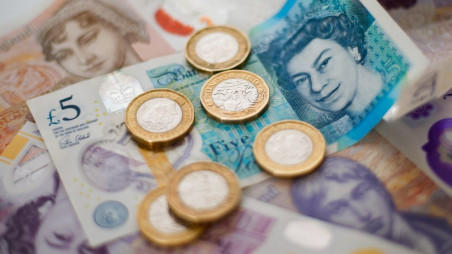Sterling's slide against the dollar to a rate last seen in 1985 has sparked talk of a dramatic spiral downwards that ends in a collapse in confidence in British assets and a balance of payments crisis.
Fund managers, analysts and former policymakers believe such a scenario is unlikely, but suspect the pound will need to get cheaper before investors return.
The currency fell to as low as $1.1407 on Wednesday as investors grow fearful of the economic outlook under new British Prime Minister Liz Truss.
She is due to unveil on Thursday a 100 billion pound-plus ($114.9 billion) package to cap consumer energy bills funded by a massive increase in government borrowing.
Sterling, which dropped again on Thursday to below $1.15, has lost nearly 10% of its value since early June - a huge move for one of the world's major currencies.
Truss is also under scrutiny as she gets ready to cut taxes and raise spending in a gamble that loosening the fiscal purse strings - at a time of double-digit inflation - will boost economic growth.
"The market has moved very far and very fast in the last couple of weeks, in the face of what is a relatively bleak economic outlook. That means there will be a recession but it will be deeper in the UK," said Charles Diebel, head of fixed income strategy at Mediolanum Asset Management, which is betting against the pound.
Britain faces slower economic growth and more persistent inflation than any other major economy next year, the International Monetary Fund (IMF) forecasts. Goldman Sachs expects the UK economy to contract by 0.6% in 2023.
Several economists including Mohamed El-Erian forecast the pound will hit $1.10 soon, implying a further 4% fall from current levels.
Capital Economics reckons sterling could test its all-time low of near $1.05 plumbed in March 1985, just before G7 powers acted to rein in the superdollar of the Reagan era in the so-called "Plaza Accord".
Yet the rush to dump British assets has been driven by international developments too, including soaring gas prices and global growth worries that have driven investors to seek shelter in the dollar. The euro and yen have also hit multi-decade lows.
A Reuters Sept. 1-6 poll of nearly 60 currency strategists is not as pessimistic. The consensus was for sterling to nudge up to $1.16 in one and three months' time. Also, sterling has not fallen as much against the euro or on a trade-weighted basis.










